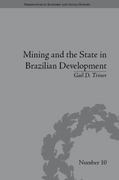Question
Under the Canadian tax system, capital that is employed in the corporate sector is taxed at a higher rate than capital in the corporate sector.
Under the Canadian tax system, capital that is employed in the corporate sector is taxed at a higher rate than capital in the corporate sector. This problem will analyze the excess burden of the differential taxation of capital.
Assume there are two sectors, corporate and noncorporate. The value of marginal product of capital in the corporate sector is given by VMPc= 100 - Kc , where Kc is the amount of capital in the corporate structure; the value of marginal product of capital in the noncorporate sector is given by VMPn= 90 - 2Kn, where Kn is the amount of capital in the noncorporate sector. In total, there are 50 units of capital in society.
a) In the absence of any taxes, how much capital is used in each sector? Drawing a diagram may help.
b) Suppose that a unit tax of 6 is levied on capital employed in the corporate sector. After the tax, how much capital is employed in each sector? What is the excess burden of the tax?
Step by Step Solution
There are 3 Steps involved in it
Step: 1

Get Instant Access to Expert-Tailored Solutions
See step-by-step solutions with expert insights and AI powered tools for academic success
Step: 2

Step: 3

Ace Your Homework with AI
Get the answers you need in no time with our AI-driven, step-by-step assistance
Get Started


